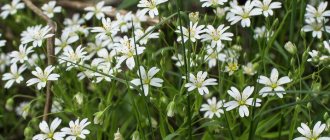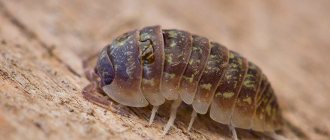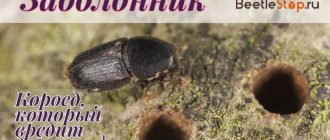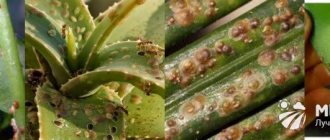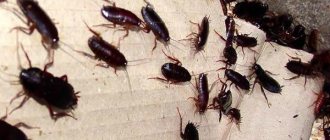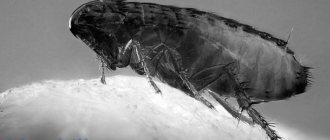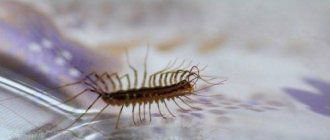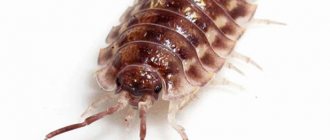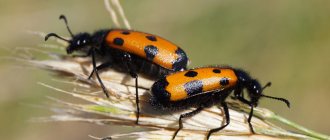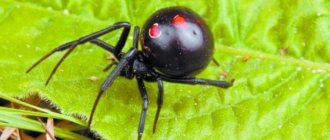How to remove wood lice that have settled in an apartment/own house, causing the least harm to the family? The article describes the reasons for the settlement of pests, how to get rid of them in various ways, what actions to take in the future so that the migration of insects back does not happen again.
Each of us, when we discover woodlice in an apartment, immediately asks the question “What to do?” These seemingly ugly insects seem to us to be pests, spreaders of infections and viruses. The search for information about methods of combating them begins immediately. The article discusses in detail what kind of insect this is, dangerous or not, bites, why they appear, how to deal with them, how to prevent their reappearance.
Insect Information
Woodlice is an ancient species of crustacean that can live in water and on land. There are more than 3,500 species of insects of this species. They are adapted to live in different places, their only feature is that their habitat must be humid. Despite the semi-hard shell, which serves as a barrier against changes in external temperatures, it should always be moist. The crustacean does not like dry places; when the surface of the body dries out, it dies.
The insect is an omnivore, due to the peculiarities of the digestive system. It can feed on food debris, dropped crumbs, rotting plants, wood, and decomposition residues. Woodlouse reproduces quickly, one individual brings up to 50 eggs at a time.
Lives - no more than 12 months.
Woodlice in the kitchen is a sign of excessive dampness
Interesting facts about woodlice
Crustaceans carry their eggs with them. Female woodlice do not leave eggs in hidden places. They have a pouch on their belly that is designed to carry eggs. After small woodlice hatch from the eggs, they first live in this pocket and only then leave it for independent existence.
Crustaceans do not emit urine. Unlike most living creatures, woodlice do not urinate, but remove waste from the body by emitting gases through the exoskeleton.
Woodlice's blue color - where does it come from? When a parasite is infected with some dangerous disease, it begins to turn blue. When you see a blue woodlice, you know it is infected.
Reason for appearance
Autumn is a damp, cold time of year, when this type of insect usually moves from the street, parks to houses and apartments. In the warm season, woodlice live in the garden, hiding in damp leaves, in the ground under stones, in dark unheated rooms and sheds. When it gets cold, they crawl into a warm, heated room.
They choose apartments/houses where it is warm and damp. Colonies migrate to areas with the most favorable living conditions. In multi-storey buildings they move through water and sewer pipes. A large number of them can be observed in boiler rooms and basements of apartment buildings.
Contrary to popular belief, insects are not dangerous, do not bite, and do not harm the place where they live. They are not carriers of infectious diseases or dangerous viruses. It’s just disgusting to think that such insects have become neighbors in the apartment. The only thing that can be spoiled is by eating the roots of young house plants in pots, which does not happen often. We can say that these plants benefit. By loosening the soil, they provide an influx of additional oxygen to the roots.
The main reason for their appearance is dampness and abundant humidity in the room, so most often they live in the bathroom, toilet, and kitchen. There are known cases where pests have taken up residence in rooms.
The abundance of pests in residential areas must be eliminated using chemical methods.
Reasons for moving into a house
Despite the fact that woodlice live on land, they prefer to settle where there is high dampness and humidity. They get into the apartment in different ways, the most likely of them:
- Penetration through ventilation shafts and pipes from basements or from neighbors;
- Entering the home along with soil from the city or store, which is used for replanting plants;
- From the attic. Often, with a constantly leaking roof, favorable conditions are created for the proliferation of parasites.
Woodlice are attracted not only by high humidity, but also by the smell of garbage, rotting fruit, and mucus on tiles and pipes in the bathroom. Therefore, they often appear in places where they spend little time cleaning and rarely empty trash cans.
In the bathroom
The bathroom is the favorite place to live for this type of crustacean. It is always warm and humid. Wood lice are sure to live in every apartment/house, but they hide in dark corners, there are not many of them, so the residents do not notice their proximity.
If they appear in large numbers during the day, measures should be taken immediately to combat them. Despite their harmlessness, it is necessary to fight woodlice when they multiply abundantly indoors, since it is unpleasant and disgusting for owners and guests.
To eradicate them, it is necessary to remove moisture from the bathroom. It is necessary to inspect all water pipes for leaks and determine the cause of excess moisture. Wipe off condensation on radiators, walls, and floors more often.
Try to dry wet clothes in a closed small bathroom as little as possible.
For additional ventilation, you can install fans that automatically turn on when you are in the room.
As soon as the room becomes drier, the woodlice will disappear and their population will decrease significantly. They will again become invisible or disappear altogether.
What are the first signs of entering a home?
Small crustaceans are nocturnal creatures, so their presence in the house can be detected quite late (a description and classification of woodlice can be found in this material). Signs may include:
- spoiled vegetables;
- traces of feces near the trash can and in the kitchen sink area;
- traces of vital activity in cereals or greens.
Also an indirect sign can be dying house plants - wood lice often settle in pots of soil, feeding on the roots and leaves of the flower.
If these moments exist, you need to make sure that these are woodlice. To directly detect crustaceans, you need to examine the dark corners of the bathroom, basement or attic of a residential building at night, illuminating with a flashlight all the corners, crevices and possible cracks in the walls, in basements - lifting objects lying on the ground. It is under bricks, overturned buckets and stacked boards that these pests like to nest.
Woodlice in the toilet
By analogy with the bathroom, if the number of crawling insects increases, you should check all water pipes, sewer pipes, and the toilet for leaks. By eliminating the cause of high humidity, the number of insects in the toilet will decrease.
In apartments of multi-storey buildings, eliminating excess humidity is easier than in a private house. Insects can live under the floor and are difficult to remove. They can live there permanently, regardless of the owner’s wishes. Chemical treatment of special instances will help remove them with a 100% guarantee. Everyone decides whether to spend money on this personally.
How dangerous are woodlice?
The insect is not dangerous to humans. It does not carry harmful bacteria, viruses, and does not bite.
It’s just aesthetically ugly, it’s unpleasant to realize that these crustaceans live in the same room with humans. They are disgusting and disgusting. What if there are a lot of them?
If the presence of woodlice in apartments and houses is undesirable, then destroying them in the garden can disrupt the entire ecological chain.
The insect is an important link in such a chain. It eats decomposed plants, converts them into useful microorganisms that serve as fertilizer for new growth and maintain the beneficial vitamin composition of old ones.
Crustaceans serve as a source of calcium for other organisms that feed on them (frogs, birds, spiders). They convert useless substances into those necessary for vitamin nutrition and plant growth.
What are woodlice?
Woodlice (or silverfish) is a beetle that belongs to the suborder of crustaceans and to the order of creatures called isopods. This means that it has both gills and a shell made of scale plates. This is the reason that white woodlice spreads in the apartment, in the bathroom, does not drown in water, does not choke and does not die, no matter what liquid medium they fall into. In total, there are about 3,500 species of such small-sized crustaceans. Here are some of the most common types of silverfish:
- Armadillo. The shell is black; when approaching it, you can see how it quickly curls up into a spiral.
- Rough. The color is brownish, yellow and red. The stratum corneum is much softer than that of the Armadillo. The body arches, but does not curl up into a ball if caught.
A more detailed description of woodlice:
- The body shape is oval and slightly convex, like a lens.
- There are two pairs of antennae on the head, one of which is longer and the second is shorter.
- The eyes are located on the sides of the head.
- The jaw in the upper part does not have tentacles, but on the lower part there are such receptors.
- The body of an adult is divided into 8 segments. The very first one protects the heads from all sides, the last segment has a kind of notch, and on the abdomen of the woodlice these chitinous formations are freer.
- Seven pairs of legs are perfectly adapted for walking and running.
- The internal branch of the body structure is the gills, specific respiratory organs, which are covered by the external branch.
When a silverfish senses danger, it curls up into a ball, which is easy to do given its segmented body structure. Thanks to its strong legs, the creature runs quickly, so it is possible to catch it with your hands, but it is not always possible. Woodlice actively begins its reproduction process in the spring, around April. The female manages to shed twice while she receives the seed and lays eggs. The larva molts about 10-12 times while it gains strength to mature. That is why sometimes you can see scales lying around the apartment, the remains of these unpleasant individuals.
Fighting dampness
Despite the harmlessness of the insect, with their large numbers, the ceilings of buildings/houses can be damaged if they are made of wood. In rooms where paper, plaster, and wooden products are stored, it is necessary to ensure that there are no woodlice.
The appearance of woodlice means excessive dampness in an apartment/private house!
Crustaceans need moisture. They die in dry rooms. An increase in the population of these creatures indicates the presence of a source of dampness that needs to be found and repaired. Constant control of indoor humidity will prevent insects from reproducing.
Facilities
How to deal with woodlice?
In the house, the insect is rather unpleasant, disgusting, disgusting, because of its appearance, although it is completely safe.
To combat wood lice, both folk remedies and chemical ones are used.
The main task is to find and remove the source of dampness.
To prevent the new colony from moving again, it is necessary to constantly monitor the serviceability of the water/sewage pipes.
A dry environment is the main enemy of woodlice!
Traditional methods:
- To achieve a quick short-term relief effect, salt barriers are used in areas of accumulation. Pour strips of salt at least 1 cm thick. Running along the barrier, woodlice become dehydrated and die. This is the safest method that not only gets rid of crustaceans, but also prevents their appearance.
- To obtain a more long-term effect, it is necessary to eliminate the cause of the appearance and reproduction of insects. Rotten materials, mainly rotting wood, a source of reproduction, are identified and replaced. The space under the floors in a private house should be dry and clean.
- Seal cracks and cracks with sealant to prevent wood lice from entering the room.
- Use of boric acid. It is a toxic substance that is poisonous to insects. In order for boric acid to begin to act, it is necessary for the woodlice to eat it, which is quite difficult to organize. Simply spraying it on the body will not have any effect. It cannot be called a panacea.
- Preparation of the mixture: red pepper, tobacco, soda ash. The product is effective for getting rid of insects. It should not be used in residential premises, since tobacco and red pepper are volatile substances that will affect the well-being of residents. There will be a burning sensation in the throat, soreness, frequent sneezing, and allergic reactions may occur.
- Mixing dry kvass with water. The mixture is sprayed in places where there are a large number of woodlice. Whether it will help or not is unclear. The room will smell of the sour smell of kvass. Kvass can be replaced with soap.
- Nests and places of accumulation can be treated with bleach (per 1 liter of water - 40g of bleach). This method must be used carefully in residential areas where there are large crowds of people and small children.
- To reduce the population of insects in flower pots, it is advised to wash the plant roots in water at room temperature or replant it in new soil. Washing the roots is an unclear procedure that does more harm than good. Replanting into new soil, a larger pot, is necessary only at certain times of the year, so as not to harm the plant.
Application of chemistry
Chemicals are used when colonizing large colonies of woodlice. It is not advisable to spray a spray can on a lonely running insect.
Finding the source of dampness in a room is a fundamental task in pest control.
If traditional methods do not help, you should resort to specialized chemical control methods. Complete removal of wood lice is possible only with the use of chemicals, so they call a pest control team that will clean the apartment/house of insects in one go. The cost will depend on the square meters of the room being processed. Before calling a brigade, it is better to try to get the unwanted guests out on your own.
Chemistry:
- Any type of dichlorvos will help get rid of not only white woodlice, but also other species. After using this type of medication, annoying neighbors no longer come.
- Some cockroach control products help against crustaceans. The insects that the drug affects are listed on the packaging. Before use, you must read the instructions for use and follow them exactly. In 3 applications you can rid your apartment of annoying woodlice. Use with caution if children live in the house with adults.
- You can get rid of woodlice in flowers using special preparations. Their regular use will protect the soil and plants from insects. Use according to the instructions on the package.
Main habitats
Small crustaceans most often settle in the bathroom, near pipes or next to a source of constant water condensation. But if you are looking for a way to get rid of woodlice, you need to know that they can live and reproduce:
- Under baseboards and sinks;
- Under rugs, especially those that lie in damp rooms and are rarely shaken out;
- In damp pantries or in the cracks of old cabinets with high humidity.
Arthropod parasites are capable of carrying fungal spores and viruses on their paws, that is, theoretically they can be a source of infectious diseases. Woodlice are also dangerous for plants - they gnaw their roots, which leads to the death of indoor flowers.
Preventive measures
Preventive measures will help create unfavorable conditions for pest migration. Their constant observance will not allow insects to appear in the apartment/own house.
- Maintaining cleanliness in the room. Regular cleaning, removal of garbage, timely washing of dishes and storage boxes.
- During repair of faulty pipes, plumbing accessories (sink, taps, toilet).
- Monitor the humidity in the room. Maintain balance. Careful control of humidity in the bathroom and toilet. Consider an additional ventilation system.
- Try to dry things after washing outside on the loggia. If this is not possible, turn on additional ventilation in the bathroom when drying clothes.
- Check the soil of indoor plants regularly to ensure it is not over-watered. Change the soil to a new one to avoid the appearance of pests.
- Seal any cracks that appear in the room in time to deprive wood lice of comfortable homes.
What woodlice look like (description and photo)
It is very difficult to confuse woodlice with cockroaches or bedbugs. If you notice gray insects in your bathroom or kitchen, they are most likely woodlice. By what other distinctive features can you recognize woodlice?
- the color is gray with a bluish tint, brown and marbled woodlice are also found;
- body length from 20 mm to 1 cm, size depends on the age of the insect;
- oval body structure, often confused with silverfish;
- the shell consists of plates, flat;
- curly short mustache;
- 7 pairs of walking legs;
- crawl slower than cockroaches;
- In case of danger, they curl up into a ring.
What woodlice look like - in the photo
